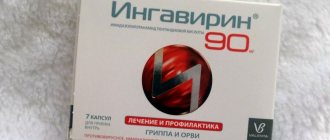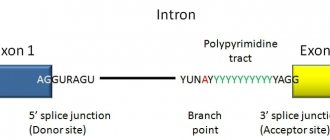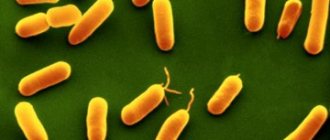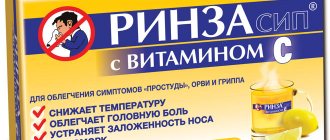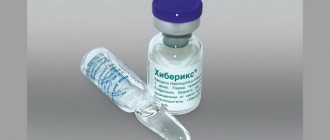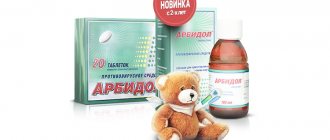Vaxigrip - flu shot
Inactivated (split) flu vaccine
Manufacturer: Sanofi-Pasteur, France.
Protects against viral diseases: influenza types A and B.
Used: for the prevention of influenza in adults and children from 6 months.
Not included in the national vaccination calendar.
Vaccination with the Vaxigrip vaccine is not carried out in clinics
special instructions
Preclinical studies have shown that the vaccine does not have embryotoxic or teratogenic effects. The decision to vaccinate pregnant women should be made by a doctor individually, taking into account the risk of contracting influenza and possible complications of influenza infection. Vaccination is safest in the II-III trimesters of pregnancy.
Does not have a teratogenic or toxic effect on the fetus. Vaccination is possible during breastfeeding.
Vaccination is carried out annually in the autumn-winter period. Vaccination is possible at the beginning of an epidemic rise in the incidence of influenza.
IV administration is not allowed.
Against the background of mild ARVI, acute intestinal diseases, etc., vaccination is carried out after normalization of body temperature.
On the day of vaccination, those vaccinated must be examined by a doctor (paramedic) with mandatory thermometry. If the body temperature is above 37°C, vaccination is not carried out.
Vaxigrip vaccination at DocDeti clinic
Most vaccines are non-live, and the vaccinated person does not affect others in any way. Some vaccines contain live, weakened pathogens that the vaccinated person can release into the environment. These weakened pathogens (viruses) are not dangerous for the vast majority, but caution should be used in some situations. The greatest number of restrictions exist for the live oral polio vaccine (OPV), since the vaccinated person releases the vaccine virus into the environment within 60 days:
1. Close contact of vaccinated children with children completely unvaccinated against polio is undesirable due to the risk of vaccine-associated polio in susceptible individuals. For the same reason, when vaccinating against polio, the first two doses are given with a non-live vaccine. Playing in the sandbox, walking together, and even visiting are not close contact! Transmission of the vaccine virus occurs through the fecal-oral route, so compliance with hygiene rules mitigates the risks.
2. Vaccination with OPV of older children, if the mother is pregnant and in late pregnancy, is not advisable, since separation of the older child and an unvaccinated newborn can be problematic. In this case, it is better to postpone OPV vaccination until the baby has received 2 doses of inactivated polio vaccine (IPV) and give OPV to both children at the same time, or, if possible, replace it with IPV.
3. Adults and children in a state of immunosuppression should also avoid close contact with people vaccinated with OPV.
The total risk of VAPP for unvaccinated contacts and for children who received OPV as the first dose is 2-4 cases per 1,000,000. As a rule, we are talking about children with immunodeficiency conditions, which themselves are very rare.
A person vaccinated with an oral vaccine against rotavirus infection can also release the vaccine virus into the environment, but it is not dangerous for contacts.
When living together with people in a state of immunosuppression, hygiene measures should be observed, since the vaccine virus can cause gastroenteritis in them.
A person vaccinated against chickenpox may shed the vaccine virus if they develop a rash as a reaction to the vaccine. Direct contact with the rash is necessary for transmission of the virus. It is recommended that it be avoided by unvaccinated and previously disease-free people who are in a state of immunosuppression, as well as non-immune pregnant women. For everyone else, contact with a vaccinated person is completely safe!
Vaccinated with live vaccines against measles, rubella, mumps and tuberculosis are not dangerous for others with any immune status!
More details
Which vaccine is more effective against influenza?
The therapeutic effect of Grippol plus and Sovigrippa is no different.
According to the opinion of many doctors, most are inclined to choose Sovigrippa. This is due to the wide range of therapeutic effects and few side effects.
Laboratory studies confirm the full compliance of vaccines with medical requirements.
The therapeutic duration of the products does not differ. Antiviral activity is noted 2-3 days after vaccination. The protective properties of pharmaceuticals last up to 6-12 months.
Description of the drug
Vaxigrip is an inactivated influenza vaccine. The production of this medicine began in 1969, but it began to be used in Russia much later - since 1992.
The composition of the Vaxigrip vaccine is based on viruses grown in chicken embryos. Prepared viruses are cleaved and inactivated in the laboratory. To achieve the desired effect, 2 viral strains of type A and 1 strain of type B are used. The description states that the necessary components are isolated from each virus, and then mixed.
For the production of antigens, the composition may be different. It depends on which virus strain epidemic needs to be prevented. Every year, the World Health Organization provides information about expected outbreaks of the disease.
Compound
1 dose of the vaccine (0.5 ml or 0.25 ml) contains neuraminidase and hemagglutinin of several viral strains:
- strain type A (H1 N1) - the amount reaches 15 or 7.5 μg of GA;
- strain type A (H3 N2) - content varies from 15 to 7.5 μg of GA;
- type B strain - the amount of this component is 15 or 7.5 μg of GA.
In addition to the main components, Vaxigrip also contains additional ingredients. This:
- water for injections;
- potassium chloride;
- sodium chloride;
- potassium dihydrogen phosphate;
- sodium hydrogen phosphate dihydrate.
Action
When the drug enters the body, it provokes the formation of immunity (humoral and tissue specific) against influenza. This happens as a result of a collision of the immune system with the viral strains included in this vaccine.
10-15 days after vaccination, the body produces antibodies to the introduced strains. The duration of immunity to them lasts for 6-12 months.
Release form
Vaxigrip vaccine is available in the form of a suspension intended for subcutaneous and intramuscular administration. It is a slightly opalescent, whitish liquid.
The dosage may vary:
- vaccine in a syringe of 0.5 ml and 0.25 ml;
- ampoules with a dosage of 0.5 ml;
- bottle with a volume of 0.5 ml.
Whose production
The country of origin of this vaccine is indicated on the packaging.
The company producing this vaccine, SANOFI PASTEUR, SA, is located in France.
Storage conditions
According to storage conditions, the temperature regime must be maintained within +2…+8°С. The drug should not be frozen.
In this case, protect the packaging from sunlight.
Pharmacological, immunological and biological properties
The influenza virion is a ribonucleic acid molecule surrounded by a carbohydrate-protein shell. Influenza virus strains differ based on the type of carbohydrate-protein complex. Once in the human body, the surface proteins of the split virus provoke immunity to the production of immunoglobulins to neutralize the viruses. However, they weaken the immune system so much that it is fraught with serious complications, including death. To prevent this, a split influenza vaccine is used during vaccination, that is, split parts of the virion. The immune system, in response to them, forms specific immunity to the introduced strains, and when it encounters a real pathogen, the body activates ready-made immunoglobulins and protects against the disease.
In the described way, the active components contribute to the formation of specific immunoglobulins in response to epidemically relevant antigens.
Pharmacodynamics
Once in the body, the vaccine activates the human immune system. It usually takes 12-18 days to achieve seroprotection, after which a stable immune response to the infection is formed.
Pharmacokinetics
For vaccines, assessment of pharmacokinetic properties is not relevant.
Which is better - Grippol plus or Sovigripp
There is no particular difference between the Grippol Plus and Sovigripp vaccines. Taking into account all the above information, we can conclude that pharmacological agents have a similar composition and side effects.
Both drugs are made in Russia, have a high degree of purification and fully comply with medical criteria.
The cost of a single dose of Sovigrippa is 200-250 rubles. The price of Grippol Plus is 2 times higher for a similar dosage and equals 430 rubles.
According to reviews, patients prefer the Sovigripp vaccine, noting its high effectiveness. Comparing the two drugs, Grippol plus is somewhat inferior to Sovigripp in quality and price.
Substitutes
If this drug, for one reason or another, cannot be used to vaccinate the patient, you can select a suitable drug from analogues. In this case, the doctor must take into account the patient’s age and the possible presence of contraindications.
Vaxigrip has several analogues. Among them are:
- MonoGrippol;
- Begrivak;
- Influvac;
- Flu;
- Agrippal;
- OrniFlu.
These medications belong to the group of immunostimulating agents and are aimed at developing resistance to influenza viruses.
Possible side effects
The following adverse reactions may be observed during vaccination: headache, sweating, myalgia, arthralgia, fever, malaise, chills, fatigue, dizziness, insomnia, vomiting, fever. Local reactions may include: redness, swelling, pain, induration, ecchymosis. Reactions usually resolve within 1-2 days and do not require treatment.
Come get vaccinated at VIRILIS. A full range of vaccines for children and adults, family vaccinations - at a special price!
Contraindications
Only a doctor can decide whether Vaxigrip is suitable for vaccination
Vaxigrip is contraindicated if you have a history of an allergic reaction to any component of the vaccine.
Vaxigrip vaccination is contraindicated in the following cases:
- If a child or adult is allergic (hypersensitivity) to the active substances of the vaccine or any of the ingredients - egg whites or chicken whites, neomycin, formaldehyde or octoxynol-9.
- If the child has an illness with high or moderate fever or acute infection.
Which vaccine is suitable for children?
Both one and the other vaccines are completely identical. Regular monitoring by Roszdravnadzor allows us to cast aside all doubts about their safety. Therefore, both products are ideal for immunizing children.
Every year, changes occur in the composition of medications, which improves their quality and effectiveness in preventing influenza.
Everyone needs to be vaccinated - children and adults. The drugs have no toxic effects, so immunization is not prohibited during pregnancy. It is impossible to fully judge the effectiveness of the vaccine. Experts recommend getting vaccinated every year to prevent infection and complications during a flu epidemic.


